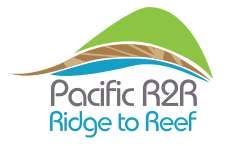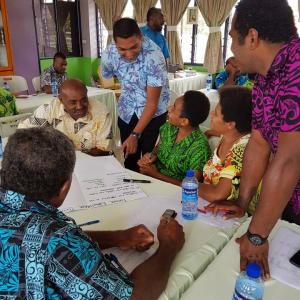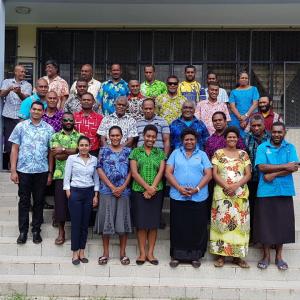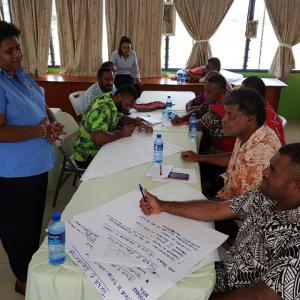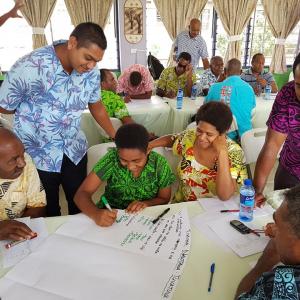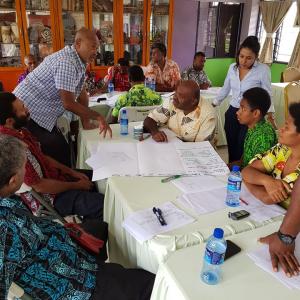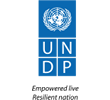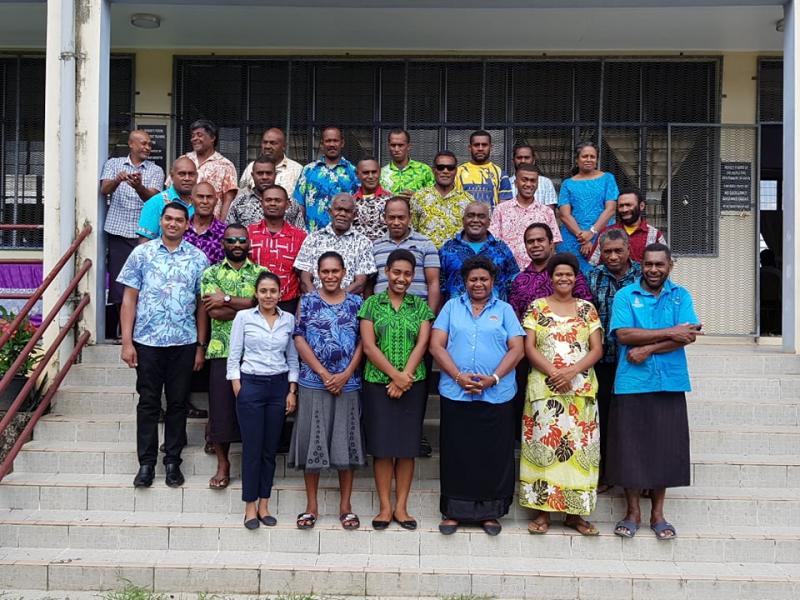
WWF Pacific with the support of Department of Environment, the Fiji Locally Managed Marine network (FLMMA) and the Ba Provincial Office facilitated consultations with Ba Watershed inland district representatives of Magodro, Naloto, Nalotawa , Savuto and Qaliyalatina to take stock of actions carried out by these communities as part of the national Ridge to Reef Project.
The discussions confirmed that communities have been active with replanting initiatives to reforest degraded sections of the Ba watershed.
Aside from the support provided by partners working on the Ridge to Reef Project, similar restoration efforts have been undertaken by the Adventist Development Relief Agency – Fiji(ADRA), Secretariat of the Pacific Community (SPC) and the Ministry of Forestry.
Collectively, it is hoped these restorative efforts will halt and reverse the degradation of the Ba Watershed Landscape and the Ba River highlighted WWF-Pacific Conservation Director, Francis Areki.
Due to decades of forest clearance, poor agricultural practices and lack of waste management systems within the watershed, the Ba River has and is continuing to degrade water quality and ecosystem function in terms of freshwater resource productivity which communities depend on for food and income. The Ba River suffers from heavy siltation and this poses potential increased risk of flooding especially for Ba Town and surrounding low lying villages, settlements and farms.
The consultations facilitated by WWF and partners was used to confirm priority actions to be implemented with these communities of Nailaga, Naloto, Nalotawa, Qaliyalatina and Magodro (districts within the Ba Watershed) in the coming months.
Some of the priority actions highlighted included the continued replanting effort in all villages within the districts, the strengthening of protected areas within designated sections of tributaries draining into the Ba River and capacity development for sustainable agricultural practices.
Challenges highlighted by the communities included continued illegal burning of the landscape which poses a risk to the ongoing replanting effort and although both government and partners were commended for their awareness and on the ground efforts, community representatives highlighted the need for more opportunities for community awareness and strengthening wider outreach to all communities in the watershed to support reversing damage.
“The workshop has been an eye-opener especially for most of us farmers here today as we often don’t get awareness sessions like this. I’ve learnt a lot of new things, especially the connectivity of what we do on land and what happens out at sea, and also how some of our current farming practices are contributing to the loss of our natural resources.This has been a very good learning experience for me and I’m sure for everyone that attended,” said Paula Namu of Balevuto village, Ba.
Part of the consultation also focused on how communities would function through inters district collaboration and having discussions on how a Ba Watershed Management Plan would integrate with their District development plans and village plans.
One of the key outcomes of the Ridge to Reef Project is to formulate a Ba Watershed Management Plan that will be coordinated by government in collaboration with existing governance structures and committees present on the ground.
The intention is for all stakeholders within the Ba Watershed to have a common plan in the form of the Ba Watershed Management Plan to work from and collaboratively support priorities defined within it.
WWF Pacific Conservation Director, Francis Areki said the intended watershed plan set out for restoring the Ba Landscape and Ba River has implications as well for the future health of fishing grounds and the Great Sea Reef, as the Ba River drains out into this system.
“Unless we recognize the connectivity between land and sea and ensure we bring synergy in sustainable practices in both areas we will not address the threats effectively. The direction set by government to enable this happens through the R2R project is a positive and encouraging one,” he said.
Original Publication: https://www.wwfpacific.org/?uNewsID=364928#
